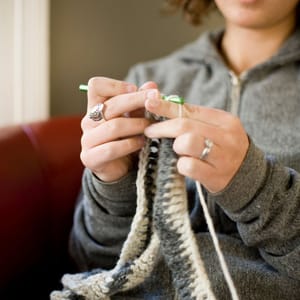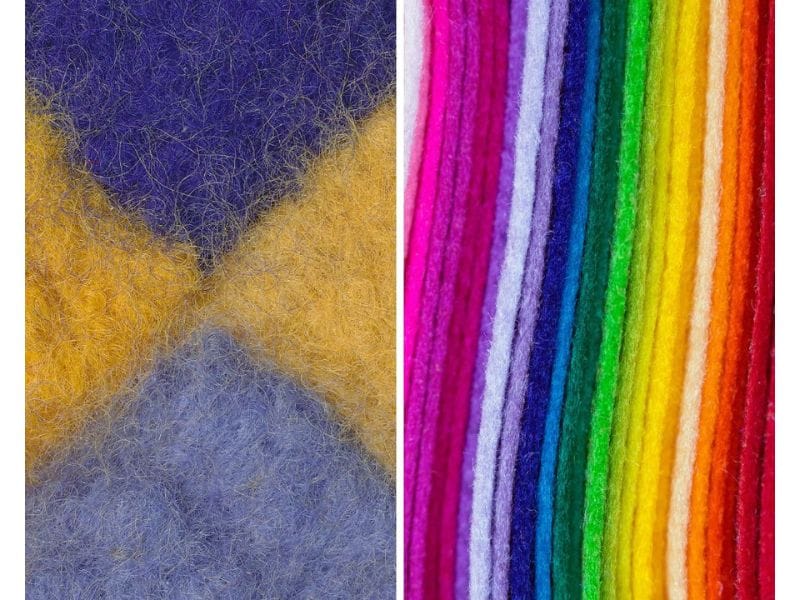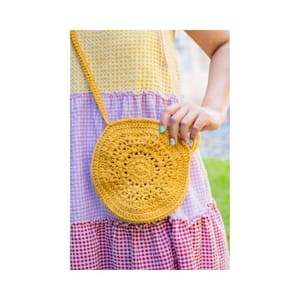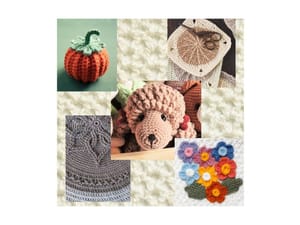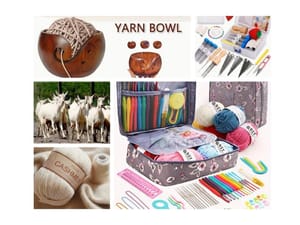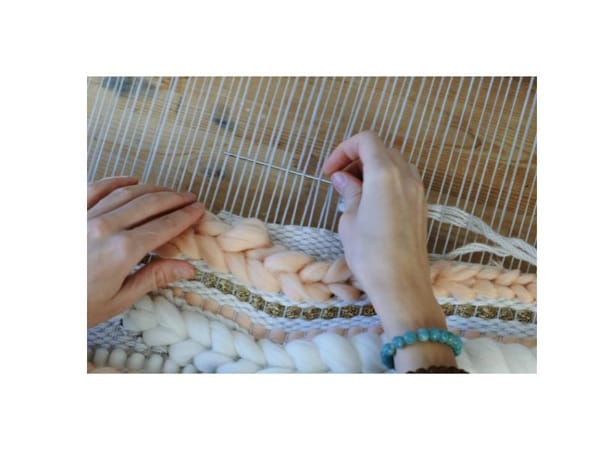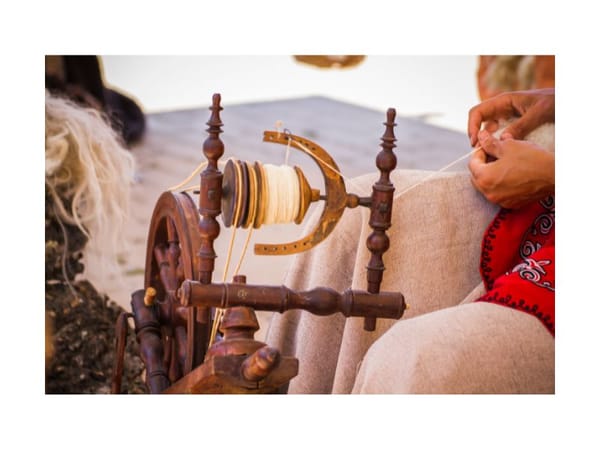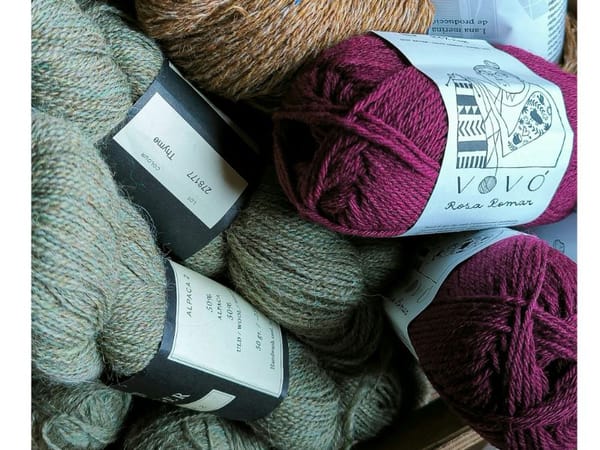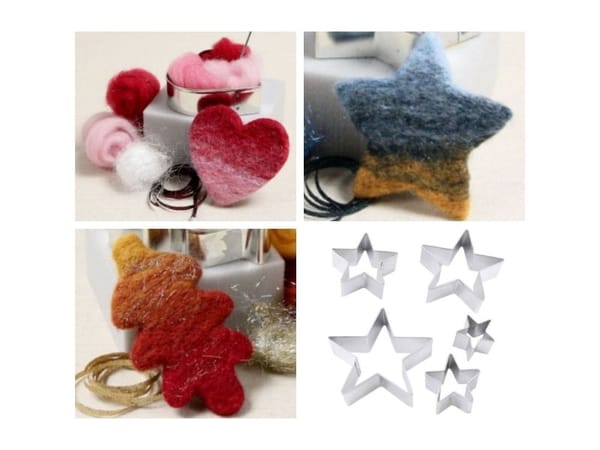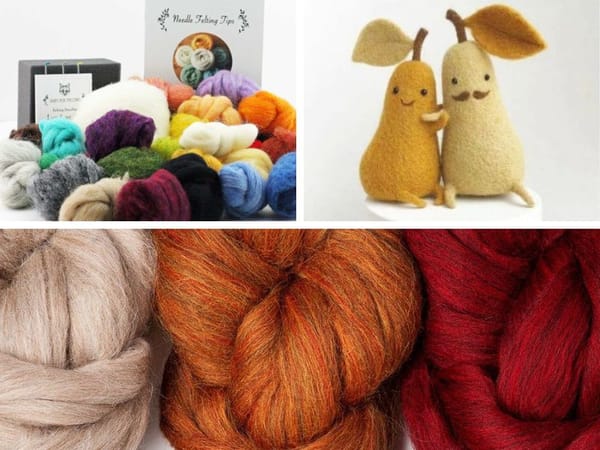Felted wool (aka wool felt), a non-woven fabric made from compressed natural wool fibers, is a staple in many craft projects and basic craft supplies.
While it offers numerous benefits, such as being a very inexpensive material and great practice material for beginners, it also comes with several drawbacks that can affect its suitability for certain applications.
Key Takeaways:
- Wool felt is a durable non-woven fabric that is easy to cut, but it can be rigid and may continue to shrink without proper care.
- Wool felt can be less durable than other fabrics, depending on its use. It won't fray but it can pill and look fuzzy over time.
- The texture of wool felt may not be ideal for all projects, as it can be quite stiff and rough with a coarse feel (depending on the wool used).

Understanding the Material: Felted Wool
Wool felt is created through a process where wool fibers are agitated and compressed into a solid fabric.
Unlike woven fabrics, wool felt does not unravel, making it a popular choice for crafting. However, its unique manufacturing process leads to some of its inherent disadvantages.
Limited Durability
One of the primary disadvantages of felt is its durability.
When compared to tightly woven materials or synthetic fibers, wool felt can wear out more quickly, especially in items that are frequently used or subjected to abrasion.
This makes it less ideal for larger projects or items that require a more durable material.
Rough Texture
The texture of wool felt can also be a drawback.
The fibers can be rough, making the fabric less suitable for clothing or accessories that come into direct contact with the skin, such as winter accessories or house shoes.
This roughness can lead to discomfort, particularly for those with sensitive skin.
Suitability for Sewing Projects
Felted wool's non-woven fabric characteristics affect how it is used in sewing projects. Its non-woven nature and texture present challenges and limitations for sewers.
Challenges with Sewing Machines
Sewing with felt can be tricky, especially for those using a sewing machine.
The stiff fabric can be difficult to maneuver under a sewing machine needle, leading to potential damage to both the fabric and the machine.
Hand stitching, such as using a blanket stitch, is often a better option when working with felt.
Not Ideal for Flowing Fabrics
Due to its stiffness, wool felt behaves differently than woven fabrics and is not suitable for projects that require a flowing fabric.
Most clothing manufacturers opt for more pliable, woven materials when designing garments that need to drape softly around the body.
Felted wool's rigidity makes it impractical for such uses.
Water Resistance and Maintenance
Felted wool's reaction to water and its overall maintenance needs can also pose disadvantages for users.

Lack of Water Resistance
Unlike some synthetic fibers such as acrylic felt or specially treated natural fibers, wool felt is not water-resistant (depending on its use).
This can be a significant disadvantage for items like outdoor wear or accessories that need to provide warmth and dryness in wet conditions. We're looking at you medieval tents.
Note: Synthetic fibers like rayon and acrylic are used to make felt.
Allergenic Properties of Felted Wool
Wool felt fabric, often sourced from sheep's wool, can pose allergenic challenges for some individuals.
This natural fiber, while celebrated for its warmth and durability, contains lanolin - a natural oil that can trigger allergic reactions in sensitive people.
For those affected, symptoms might include skin irritation or respiratory issues when handling or wearing wool fabrics.
As a result, crafters and consumers must consider potential allergenic properties before choosing wool-felt fabric for their next project, especially when the end product is intended for personal use or as clothing.
In response to these concerns, many basic craft supplies stores and your local fabric store may now offer hypoallergenic alternatives such as synthetic fibers and acrylic felt.
These alternatives mimic the texture and insulating properties of pure wool without the allergenic components, making them a safer choice for those with sensitivities.
Additionally, these synthetic options are generally inexpensive and available in different weights, making them accessible for various felt fabric projects, from felt hats to decorative storage solutions.
Felted Wool in Decorative Crafts
Felted wool's unique texture and malleability make it an excellent practice material for decorative crafts.

DIY enthusiasts often utilize felt fabric sheets available at craft stores to create festive shapes, easy felt boxes, or even intricate felt bags.
These projects not only add decorative storage to homes but also serve as a creative outlet. The rough fibers of felt material, while sometimes a challenge, can add a rustic charm to the finished products, making each piece distinctively textured and visually appealing.
Moreover, felt fabric crafts are not limited to small items.
Larger projects, such as creating custom felt hats or designing unique felt fabric wall hangings, are also popular.
These crafts allow for personal expression and can be tailored to fit specific aesthetic or functional needs. Whether it's a lightweight felt for delicate work or a heavier grade for more durable items, the local fabric store typically stocks a variety of felt fabrics to suit different creative demands.
This versatility ensures that wool felt fabric remains a favored choice among crafters for both traditional and innovative projects.
Note: You will find colorful felt sheets at a craft or fabric store. These lightweight felt sheets are an inexpensive material, are a solid fabric, and are sometimes made of polyester (or other fabrics). They are great practice material for many felt crafts.
Care and Cleaning Challenges
Caring for wool felt items requires extra attention.
The fabric should ideally be washed on a delicate cycle or by hand to avoid compression or damage.
This maintenance requirement can be a deterrent for those looking for easy-care materials.
Comparison with Other Fabrics
When choosing materials for craft projects or other fabric needs, it's helpful to compare wool-felt fabric with other options available on the market.
Felted Wool vs. Synthetic Felt
Synthetic felt, made from recycled plastic or acrylic fibers, offers different attributes.
It is generally more durable and stain-resistant than natural wool felt, making it suitable for a wider range of applications, including outdoor projects.
Natural Wool vs. Wool Blend Felt
Wool blend felt, which combines wool with synthetic fibers, can offer a balance between the natural appeal of wool and the durability of synthetic materials.
This makes it a versatile option for many crafters and hobbyists.

Environmental Impact
Felted wool is a renewable resource with a low environmental impact and is eco-friendly.
However, sheep breeding, production and use of wool felt also have environmental considerations that can be seen as one of the disadvantages of felt by some users.
Sustainability Concerns
While natural wool is a renewable resource, the felting process can be energy-intensive, and the use of animal fur in wool production raises ethical and ecological concerns.
Wrapping Up
Wool felt fabric, while popular for many craft and sewing projects, presents several disadvantages that can limit its use.
Its durability, texture, and lack of water resistance make it less suitable for certain applications.
When choosing wool felt, consider the specific needs of your project and weigh these against the material's characteristics.

Q1: Is wool felt wool suitable for making clothing?
A: Wool felt is generally not ideal for clothing due to its rough fibers, texture, and stiffness. It is better suited for decorative items, crafts, and accessories that do not require a soft, flowing fabric.
Note: Nuno felt fabric is light and flowy.
Q2: Can felted wool be washed in a washing machine?
A: Felted wool can be washed in a washing machine but should be placed on a delicate cycle to prevent further felting and damage. Hand washing is often recommended to maintain the quality of the fabric.
Q3: Are there any hypoallergenic alternatives to wool felt?
A: For those sensitive to wool fibers, synthetic felts or woven fabrics of wool blends with a higher percentage of synthetic fibers might be a better option. These alternatives are less likely to irritate sensitive skin and offer similar benefits for crafting and sewing with felt.


Images Source: Canva and Pexels

